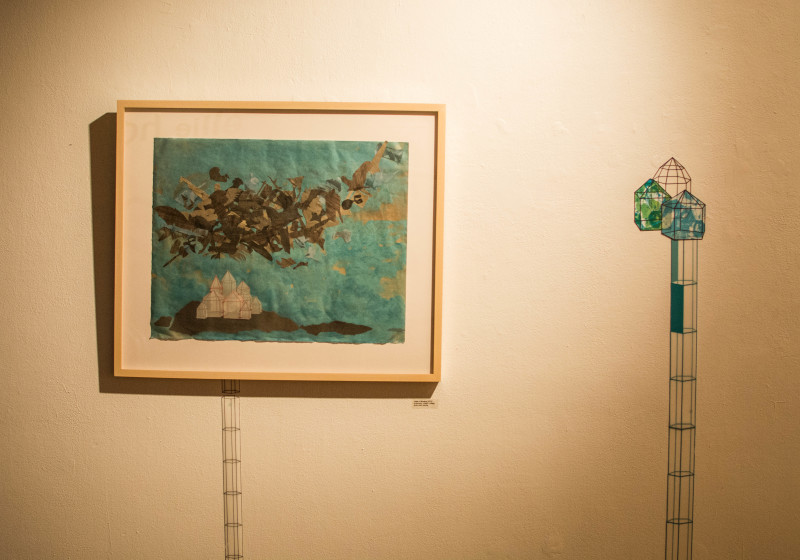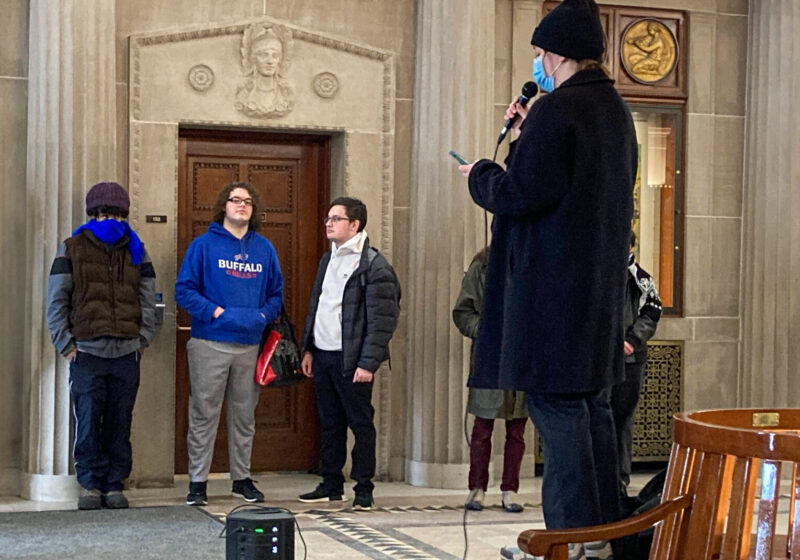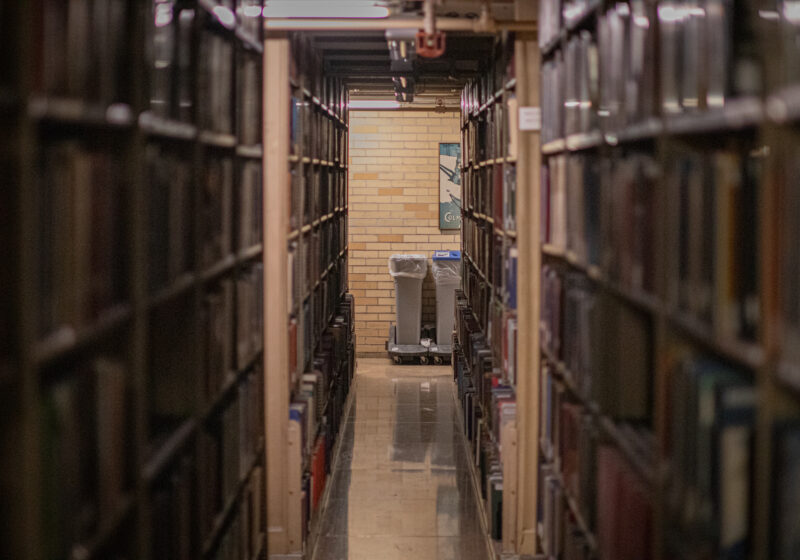Take a step into Hartnett Gallery, and you are placed in the middle of a picture book, one where little houses are fighting to survive in a peculiar land filled with aggressive hordes of swirling black forms. Across the walls of the gallery stretch tunnels that connect small buildings and pictures, while floating in the middle of it lies an eerie cloud of silhouetted shapes. This is Ellie Honl’s “Refuge,” an exhibition of her latest prints and installations focused on a strange, albeit comprehensible, world.
Growing up in Wisconsin, Honl does not remember aspiring to be an artist as a child. She attended St. Olaf College in Minnesota, where she pursued interests in architecture and art therapy, receiving her a B.A. in Studio Art in 2003. In 2008 she was awarded an M.F.A. in Printmaking from the University of Iowa. She now resides in Indiana, where she teaches at Indiana University Bloomington.
There are many influences present in Honl’s work, but they all stem from a sense of wonder, what she describes as the “childlike sense of awe and amazement” and the “establishment of something awesomely mysterious,” among other things. The inspiration for this series occurred seven years ago when she witnessed hundreds of starlings flocking at twilight for the first time.
Her prints started to focus on the organic forms made up of swarming shapes, but there was something missing. She struck a balance by incorporating the geometric figures of Wardian cases (a type of terrarium popular in the Victorian era), screen printing them onto mica sheets and then sewing those onto the prints.
The opposition between the houses and eddying forms reminded Honl of Sigmund Freud’s theory of defense mechanisms, so she began to construct her prints as stories that evoked them as well as contemporary coping strategies. The pieces in “Refuge” are arranged so that the referenced strategies move from maladaptive to adaptive, left to right.
With that decision, it became clear to Honl that the abstract flock represented anxiety and fear. “Swarm” (2016), the hanging installation of laser-cut rusted steel plates, directly addresses these worries that take the form of skulls, guns, and other frightening images. Meanwhile, the prints in the show leave these apprehensions indistinct and nebulous, causing tension—even a sense of foreboding—between the works.
“Head in the Sand” (2012) represents a maladaptive strategy whereby the problem is ignored and attention is directed inward. The piece encourages viewers to look closely at Honl’s needlework and begin to imagine a subterranean life for themselves. This composition inspires “Infrastructure” (2016), the Mylar installation of tunnels on the gallery walls.
In contrast, the most adaptive strategy is represented by “Acceptance” (2015). This piece is disconnected from the tunnel system, no longer requiring that support. In the visually simple print, the dark cloud has been evacuated of volume and the houses have disappeared, their protection now unnecessary without the threat. The anxiety has dissipated, replaced by a wide blue sky.
There is also the aptly titled “Coping Strategies” (2012), a stop-motion video that elucidates the histories conveyed by the prints. In it the houses’ individual personalities are expanded and their coping strategies examined. The animation is yet unfinished, but promises to be a tale worth several retellings.
Despite the subject matter, Honl never loses sight of the initial wonder that inspired her to take on these shapes and themes in the first place. The works of art are inviting with their attention to detail, painterly technique, and narrative quality, while in the gallery they are able to strike up a whimsical conversation about what elsewhere would be a weighty topic. Honl’s world is easy to get lost in—even just for moment—to take refuge from this hectic world.
“Refuge” is on view at the Hartnett Gallery until Feb. 14.





